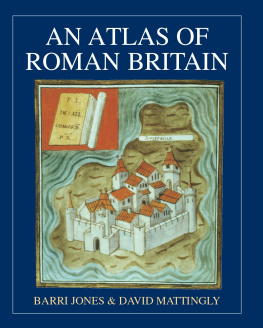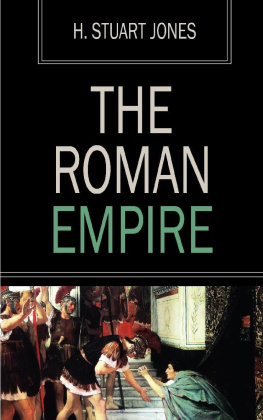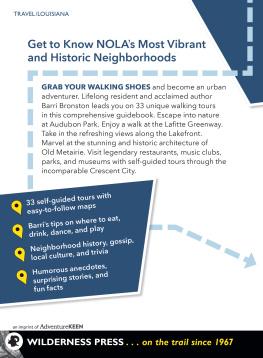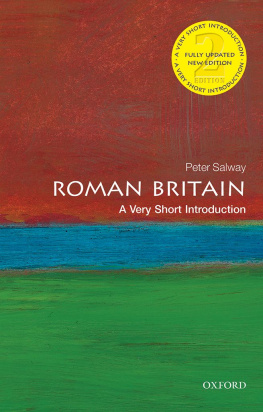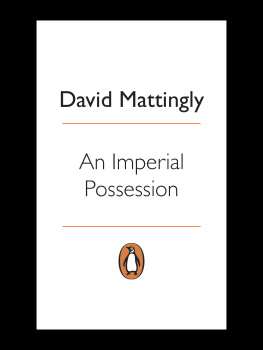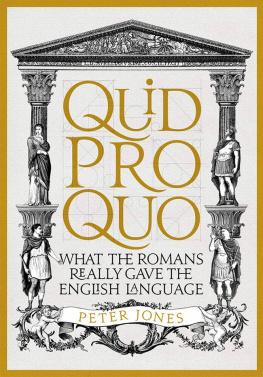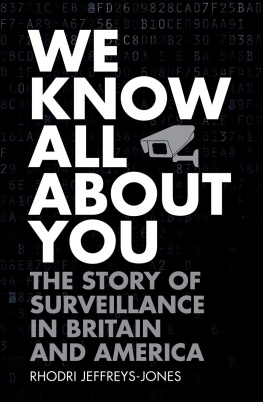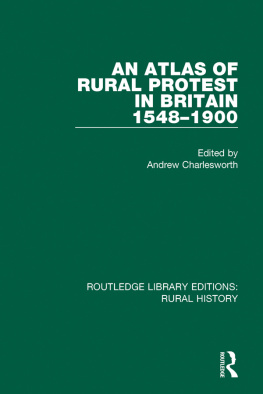Published by
Oxbow Books, Oxford
Barri Jones and David Mattingly, 1990
First published by Blackwell Publishers 1990
Reprinted by Oxbow Books 2002
Reprinted 2007
9781782974338
A CIP record for this book is available from the British Library
This book is available direct from,
Oxbow Books, Oxford
www.oxbowbooks.com
and
The David Brown Book Company
PO Box 511, Oakville, CT 06779, USA
(Phone: 860-945-9329; Fax: 860-945-9468)
Printed in Great Britain at
the University Press,
Cambridge
Preface
T HE amount of effort that has been expended on the study of Roman Britain in terms of excavation and fieldwork probably makes it the most intensively studied province in the Roman empire. Whilst Romano-British archaeologists may occasionally cast envious glances towards the better-preserved monuments of the Mediterranean, justifiable pride can be drawn from the fact that many of the less-distinguished remains of Britain are better understood than the sites of the core provinces of the Roman world. Nonetheless, such sentiments have not been shared by all; indeed, an eminent Roman historian went so far in a tutorial with the first author of this book as to refer to the archaeology of Roman Britain, as two wet bricks in a wet field. This book is an attempt to offer a corrective to such derogatory views and to present in graphic form the breadth and depth of our knowledge about the British outpost of the Roman empire.
The task of translating this knowledge to map form has no particular claim to novelty. It is an obvious step and we are all too aware of our enormous debt to many other scholars whose work is represented at various levels in the maps that follow. The composite nature of the majority of the maps, drawn from several sources, has rendered it impossible to acknowledge fully every one of those scholars. A list of the more significant acknowledgements is included at the end of the Preface. Nor has it been possible in a book of this sort to provide detailed notes. However, the full bibliography at the end is arranged by chapter division and will assist the interested reader in exploring more deeply the literature to which our maps relate. To all the hundreds of scholars whose works we have consulted and utilized in preparing this book we extend our gratitude; to any whose work we may inadvertently have overlooked we apologize.
The originality of this atlas lies primarily in the gathering together of so much material in one place for the first time. The excellent Ordnance survey map of Roman Britain and the more recently produced sheets of the Tabula Imperii Romani for Britain have shown the way here, but one of the problems associated with such maps is that data from a long historical period and of highly varied nature has to be condensed onto a single sheet. The material covered by those maps is necessarily selective, and introduces problems of individual weighting. The presentation of finds evidence on rural settlement, particularly outside the zone of the villa economy, has suffered in this respect. The corpus of maps and plans in this atlas has been brought together to provide insights into the history, political and settlement geography, culture, society and economy of Britain in the Roman period, in a manner which differs from that of the standard maps and text-books on the subject. Moreover, we have attempted to standardize our presentation to a regular series of scales for ease of comparison. The reader should note that we have adopted a preference for metric measurement throughout. For plans of sites, utilized particularly in the later chapters, we have also tried to impose some degree of uniformity on originals drawn in a wide range of styles and conventions. Unless otherwise indicated north is at the top of each map or plan. Photographs are included throughout to add a further dimension to the visual narrative.
As is so often the case with bright ideas, completion of the project has taken much longer than originally envisaged, but this is, in one sense, yet further testimony to the scope of Romano-British studies. We would emphasize, however, that the final choice of material and the mode of presentation reflects our personal preferences. Whilst we have designed the atlas to present a broad overview of the current state of Romano-British studies, we have occasionally chosen to present innovative and sometimes more speculative ideas reflecting new developments in the subject. The title of the book deliberately does not preclude the possibility that other scholars might have made different choices or laid emphasis in other areas. Nor should we deny that maps can sometimes mislead. It should be borne in mind that many of our maps represent the current state of knowledge, not a full and accurate picture of ancient site or artefact distribution. New discoveries will undoubtedly cause revisions and lead to greater comprehension in some cases.
Yet the cartographic approach is in many respects a particularly appropriate way of reviewing archaeological and historical data. The structure of the book is essentially thematic, picking up on major research areas in Romano-British archaeology. The topography of Britain, its climate and natural resources have all shaped the pattern of habitation through the ages and demand consideration in an atlas such as this. Recent work on changing coastal morphology and its interrelationship with settlement location is also reviewed in Chapter 1.
Likewise, much research hs been undertaken on the topographical evidence from ancient sources, reviewed in Chapter 2. In the study of place names, where plausible suggestion notoriously becomes transmuted into received fact, it is important to demonstrate that a significant percentage of locations referred to by some of our sources (for example the Ravenna Cosmography ) remains unidentified. This chapter is also designed to explore the depth of geographic knowledge about the remote outpost of empire built up by Roman administrators, geographers and travellers, and to assess the contributions of Romans in Britain and of Britons in the Roman empire to the nomenclature of places and landscape features.
The late prehistoric archaeology of Britain has made major advances in recent decades, particularly in our understanding of cross-Channel contacts and trade contacts in the Celtic world. This in turn has added to our characterisation of the emergent state systems of the time, with their incipient urbanization and patterns of coin use (Chapter 3).
Overall, part of the perennial fascination of late Iron Age and Romano-British studies lies in the interplay of difficult and sometimes conflicting archaeological evidence set against a skeleton framework of literary and epigraphic material. The military history, and to a lesser extent the course of civil government of the province, has long been known in outline (Chapters 4 and 5). Yet in both areas, a potential defect in the study has been the search for unitary solutions, specifically the desire to link chronological evidence from one or more sites with some attested historical event and to generalize from that a picture of broader application. The impulse to make such connections between local evidence and historically documented events is all too infrequently resisted. In reality, dating evidence is rarely so precise as to allow us certainty within a few years (or even a decade) for the foundation or abandonment dates of Roman forts or the erection of urban defences to quote but two obvious examples. The date brackets of the distribution maps of forts are deliberately wider in this atlas than has been the fashion in a number of recent studies. In assessing the activity of early Roman governors in Britain we have focused our maps on the general area of their campaigns and have resisted the temptation to ascribe specific fort construction work to these individuals. We have tried to emphasize the ebb-and-flow nature of Roman campaigning and do not endorse the view that these early governors sought to create complex frontiers within lowland Britain.

